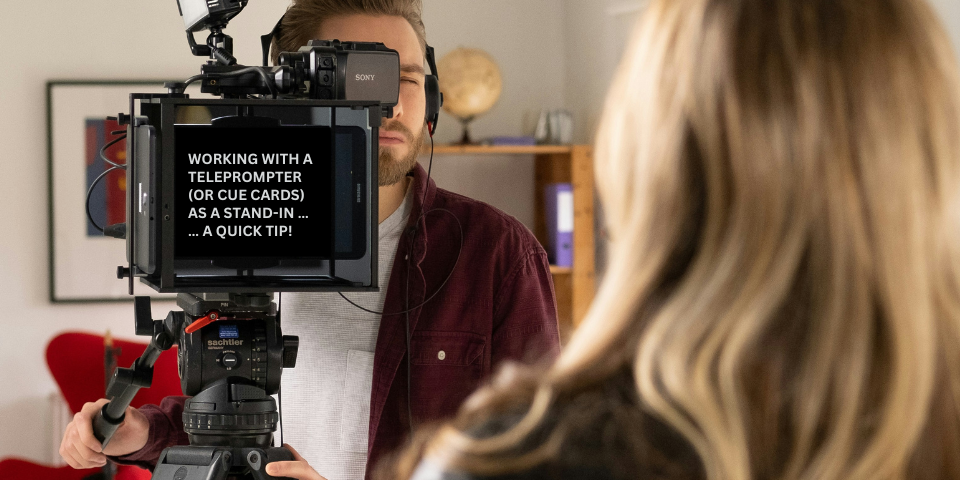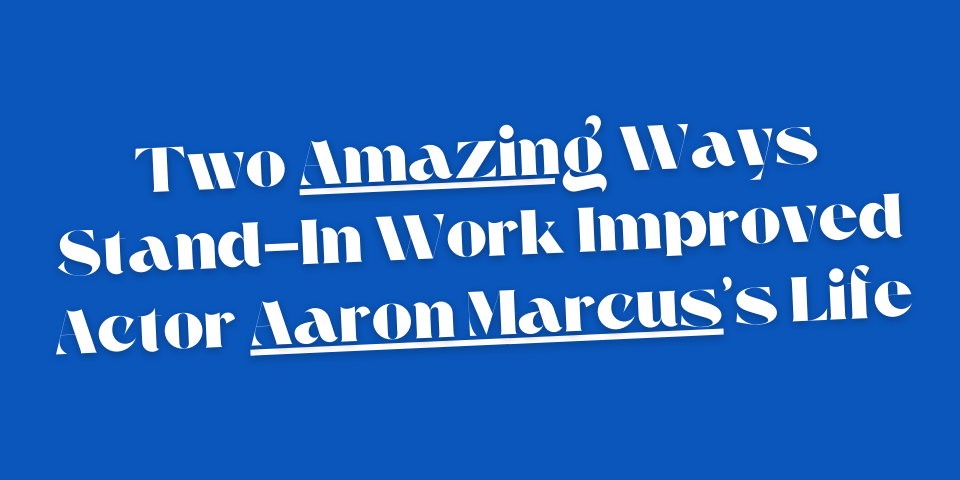Let’s say you’re standing in for an actor who is on camera in a scene, and your actor does seven takes.
Then let’s say that in the first five takes he did the blocking he did in marking rehearsal. In the sixth take, he varied his blocking considerably. And in the seventh take, he varied his blocking yet again.
In the end, you end up with three different options for blocking:
- the original blocking that was also done during marking rehearsal, which is likely marked on the floor
- a variation on the original blocking, which is considerably different from the original blocking and may not match the floor marks
- another variation on the original blocking, considerably different from the other two versions and which also does not match the floor marks.
When second team is called back to set, which blocking do you perform?
A great question. This post aims to help you answer it.
How to Deal with First-Team Blocking Variations
I posed this very question to a luminary script supervisor with whom I have worked regularly.
The script supervisor, by the way, is the person on set, usually seated very close to the monitors and next to the director, who logs information about each shot. The script supervisor will help actors with lines if actors call “Line!” The script supervisor also is in charge of continuity from shot to shot and will sometimes photograph the shots on the monitors to keep track of continuity.
After each take, you will often hear the director say things like “Print that!” or “Let’s do another one for safety” or “Check the gate!” These phrases may clue you in to which takes the director likes the most. When you hear the director say these things, you may get the sense that that take is what the director will be using, so you would step in and do the blocking your actor did in those takes.
However, sometimes it’s not all that clear which variation on the blocking you should do when you step back in. The script supervisor to whom I posed the question on which blocking to use said that I’d be free to ask her if I wasn’t sure which blocking I should perform. Of anyone on the crew, she would know best in terms of continuity, so she would be the best resource for figuring out the appropriate blocking in the next setup.
That helped to solve that problem. So, one answer for the question of which blocking to use is, “Ask the script supervisor.”
No Relationship with the Script Supervisor? Try This
If you don’t feel comfortable asking the script supervisor, or if you don’t really have enough time to ask the script supervisor, one way to address the issue is to do the blocking of the last take your actor did. In other words, do the blocking your actor did in the last take, the one after which the director called “Check the gate!”
Of course, that won’t always be a fit. Sometimes the DP or the camera department might object to your new position and blocking, especially if the blocking doesn’t match the marks on the floor. In such a case, you might quickly explain that you’re doing the blocking your actor did in the last take. If the person with whom you’re speaking doesn’t seem satisfied with your answer, simply go back to the original blocking marked on the floor and let that person figure out the shot.
Or Try This!
Let’s imagine another scenario of seven takes. If the first take matches the marks on the floor, the next five takes are different from the marks but relatively consistent, and the last take is different from all of the previous the takes, I might opt to do the most regularly repeated blocking when stepping back in. That is, I might opt for doing the blocking performed in takes two through six.
I might do this especially when these takes seem like an improvement on the original blocking and when the last take seemed more or less like a fluke take. There is more art than science to figuring out the right blocking when stepping back in, so it’s best to be armed with several ways to approach the issue. Want another idea?
Try This As Well!
If there is a lot of variation between takes, it may behoove you to simply stick to the original blocking rather than try to explain all of the different takes. This approach is probably less desired as a go-to strategy because it may suggest you aren’t paying attention to the latest developments of the scene, but in some settings it might be the best strategy. Again, if anyone objects, explain the wide variety of takes and then explain you’ll do whatever blocking the person wants you to do.
… But Definitely Do This
This is to say that it is ideal for you to know the blocking your actor did in each take and be ready to perform that blocking should the camera department, DP, or director need you to perform that blocking. Knowing all of your actor’s takes is better than knowing some or knowing none of them.
From my experience, in choosing what blocking to perform when stepping back in after a setup, the latest take’s blocking has the most importance, followed by the blocking that is repeated the most, followed by the blocking as outlined with the floor marks. In other words, if you don’t have the luxury of checking with the script supervisor on which take’s blocking to perform, usually opt for the latest take’s blocking, else the repeated blocking, or maybe even the original blocking.
Watch the Monitors!
A number of stand-ins do not watch the monitors from take to take, so when they step back in, they are unaware of the blocking changes their actors made.
Teaching these stand-ins the new blocking takes time the observant stand-in doesn’t need to take, so in order to save the production time and money, it is best to keep abreast of the latest blocking your actor has performed by watching the monitors during takes.
This is usually more important in the first few setups, when your actor’s blocking is more likely to change; the later setups will usually require your actor’s blocking to solidify to a particular extent. But all in all, make it a habit to watch the monitors, and figuring out what blocking to perform when you step back in shouldn’t be an embarrassing issue!
How do you manage standing in on scenes when your actor varies his blocking? Share below your experiences!






Leave A Comment